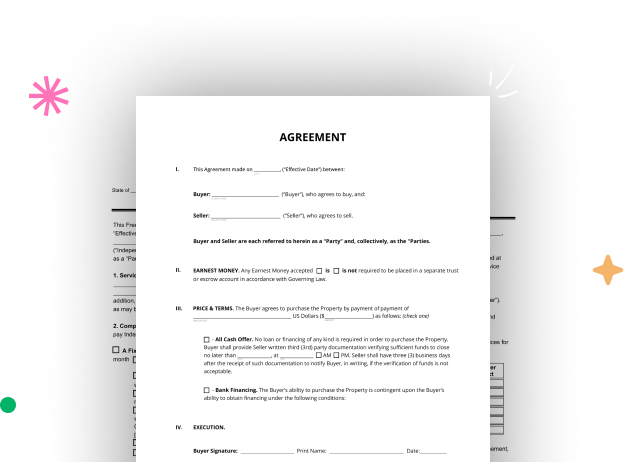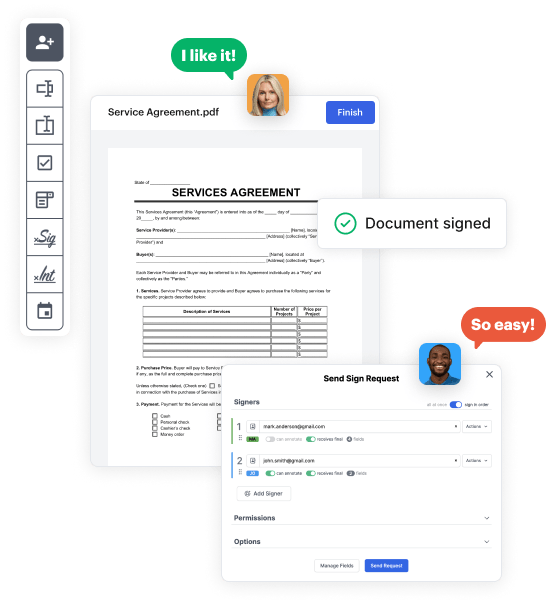

Begin by accessing your DocHub account. Try out the pro DocHub functionality at no cost for 30 days.
Once signed in, head to the DocHub dashboard. This is where you'll build your forms and handle your document workflow.
Hit New Document and select Create Blank Document to be redirected to the form builder.
Use the DocHub features to add and arrange form fields like text areas, signature boxes, images, and others to your form.
Add needed text, such as questions or instructions, using the text tool to guide the users in your form.
Modify the properties of each field, such as making them required or formatting them according to the data you expect to collect. Assign recipients if applicable.
After you’ve managed to design the Partnership Package, make a final review of your form. Then, save the form within DocHub, send it to your preferred location, or distribute it via a link or email.